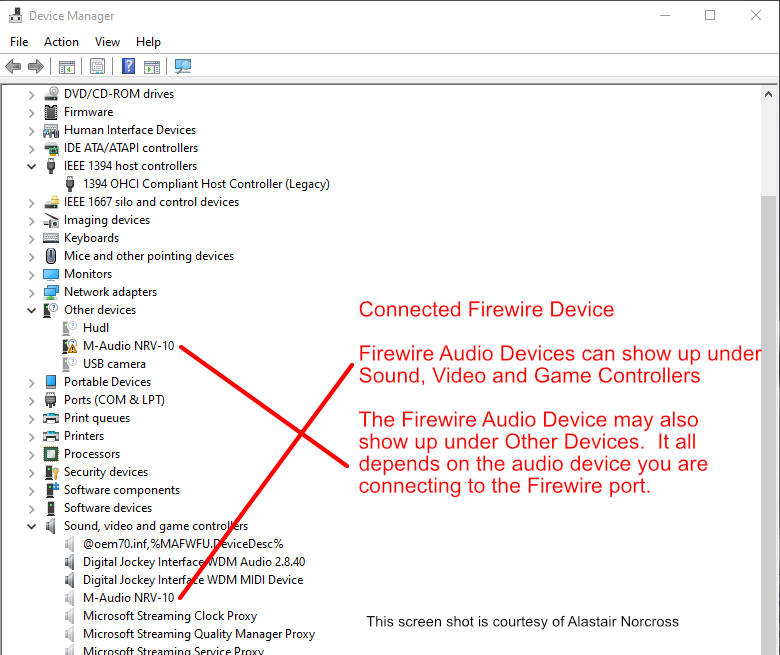

The 1394ohci.sys bus driver requires a physical layer (PHY) that supports IEEE-1394a or IEEE-1394b. It does not support a PHY that supports IEEE-1394-1995. This requirement is due to the 1394ohci.sys bus driver's exclusive use of short (arbitrated) bus resets.

NODE_DEVICE_EXTENSION Structure UsageĪ client driver can reference the device extension in the 1394 bus driver associated with the physical device object (PDO) for the device that the client driver controls. This device extension is described by the NODE_DEVICE_EXTENSION structure. In 1394ohci.sys, this structure remains at the same location as in the legacy 1394 bus driver, but the nonstatic members of the structure might not be valid. When a client driver uses the new 1394 bus driver, they must make sure that the data accessed in NODE_DEVICE_EXTENSION is valid. The static members of NODE_DEVICE_EXTENSION that contain valid data are Tag, DeviceObject, and PortDeviceObject. All other members NODE_DEVICE_EXTENSION are nonstatic, which the client driver must not reference. The default behavior of the 1394ohci.sys bus driver is to optimize the gap count when it finds only IEEE 1394a devices on the 1394 bus, excluding the local node.

For example, if the system that is running 1394ohci.sys has a host controller that complies with IEEE 1394b but all devices on the bus comply with IEEE 1394a, then the new 1394 bus driver tries to optimize the gap count. Gap count optimization occurs only if the 1394ohci.sys bus driver determines that the local node is the bus manager.
#1394 FIREWIRE DRIVER WINDOWS 10 64 BIT#

The Device Manager should not crash when it is told to do this - at least it didn't on my machine. Next, run the Device Manager and "Update" the 1394 Driver by navigating to the folder located in the Programs (x86) folder, and selecting either the x86 or 圆4 version, depending on which type of Windows system you're running.
#1394 FIREWIRE DRIVER WINDOWS 10 INSTALL#
msi file, and while it appears to install the driver, all it really does is create a folder named "1394 OHCI Compliant Host Controller (Legacy)" in your C:/Program Files (x86) folder, and deposits the necessary driver files there - one set for 32 bit and for 64 bit Windows systems - you'll need to know which you're running. I eventually found I had to double click on the. Once I downloaded it, I thought that all I needed to do open the Windows Device Manager, select the "1394 IEEE." entry, select "Update Driver" and then navigate to this file. I assume you've followed the instructions from a site like … wire-1.htm and downloaded the file you need from … Driver.msi Maybe you've done all of what I'm about to say, but I'll say it because I encountered difficulty when I installed the Legacy Firewire driver in Win10.


 0 kommentar(er)
0 kommentar(er)
